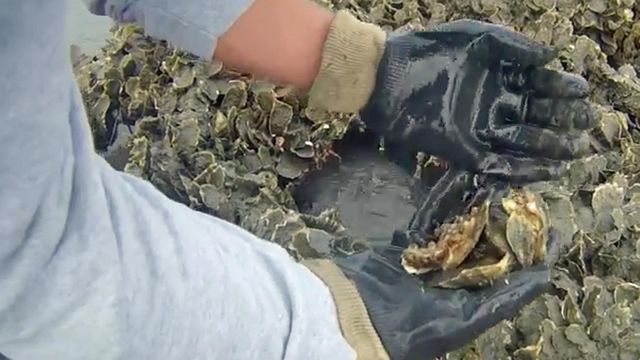Scientist, fisherman combine to boost oysters off NC coast
The oyster population along the North Carolina Coast is about 10 percent of what it once was, but an unlikely pairing of scientist and fisherman is trying to turn that around.
Posted — Updated"Everybody calls me Clammerhead," Cessna says.
"When we started, Clammerhead thought he knew everything about oysters. I knew nothing at all," Lindquist said.
Working together at UNC's Institute of Marine Sciences in Morehead City, the pair developed a unique, biodegradable fiber structure where wild native oyster seedlings can attach themselves – an oyster condominium. They've deployed the material in the Newport River.
Their experiment is about more than boosting the supply of tasty shellfish. Oysters help stabilize the shoreline, filter polluted water and create habitat for other sea life.
UNC will hold the patent on the product, giving Lindquist and Clammerhead exclusive rights to use it.
Lindquist and Cessna noticed an interesting side effect, too. Because the Oysters grow on the fiber, the shells will absorb some of those fibers, allowing the pair to identity any oysters stolen from their beds.
• Credits
Copyright 2024 by Capitol Broadcasting Company. All rights reserved. This material may not be published, broadcast, rewritten or redistributed.





